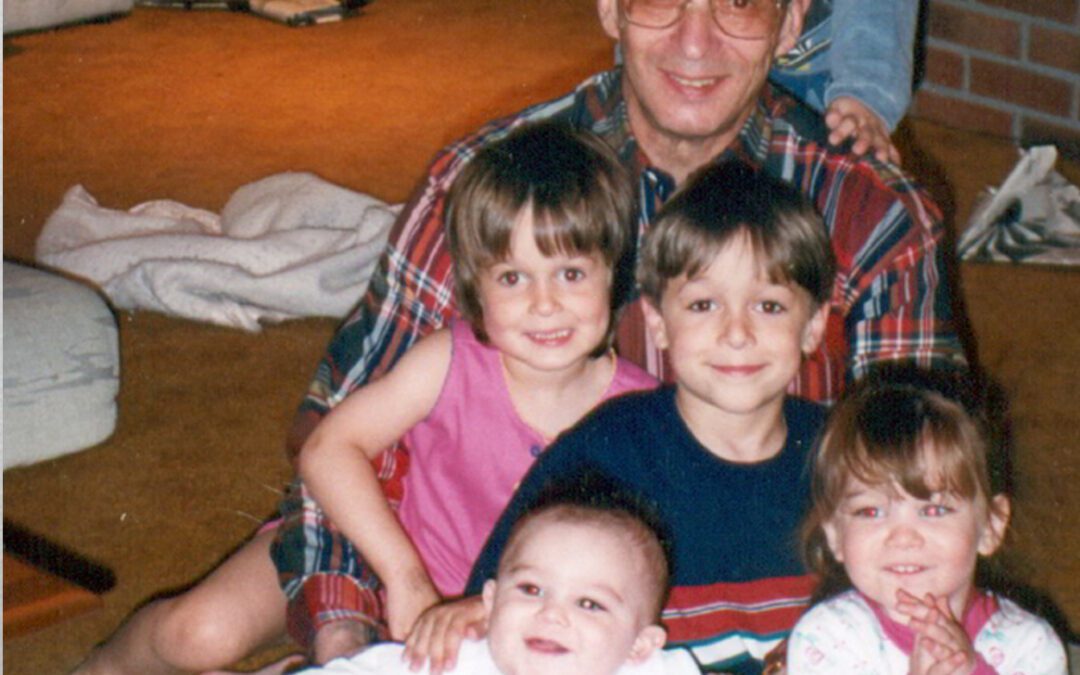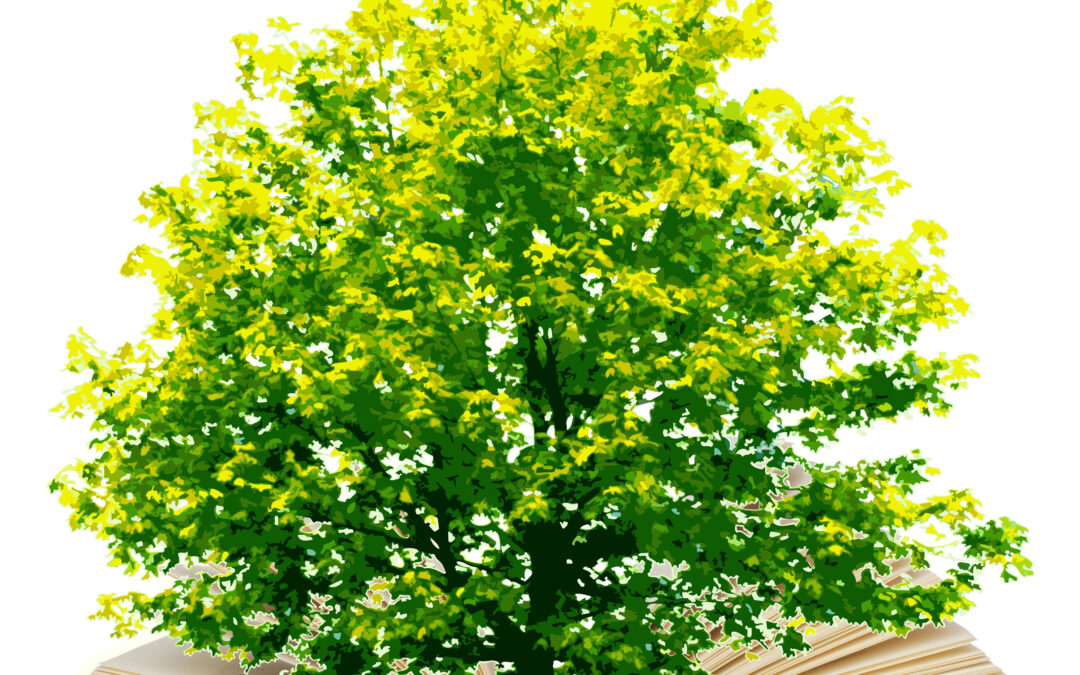
Joseph and the Art of Grandparenting
In fact, when we take a deeper dive into the 23 verses that make up this chapter, we find so many things that might parallel the grandparent-parent-grandchild relationships in today’s world. The chapter begins with Joseph being told that his father is sick, and he takes his sons, Menashe and Ephraim, to visit.

Midrash HaZaK – Introduction
“Ben Bag Bag would say: turn it and turn it again, for all is in it; see through it; grow old and worn in it; do not budge from it, for there is nothing that works better than it. (Pirkei Avot, “The Chapters of our Fathers,” 5:22) In the early part of the...

Chukat: The Red Heifer and Our Stuff, Rabbi Andra Greenwald
Approaching the eighth decade of life often brings with it terms like downsizing, purging, paring and the freedom to let go. Many of us opt to see our children and grandchildren enjoy their inheritance while we’re here, to eat off the china with them and to see the jewelry sparkle and reflect in our loved ones’ eyes.

Devarim: The Power of Retelling, Rabbi Jane Rachel Litman
A few weeks ago, I was invited to speak to a university class about being one of the first generation of women and queer rabbis. At these kinds of talks, I usually tell mostly the same stories – of how a guy trying to pick me up on a ski lift actually fell off when I told him I was studying to be a rabbi,

Mattot: What Words Can Create, Ilene Winn-Lederer
Although I grew up with a strong Jewish identity, I did not experience a traditional Jewish education and came to Torah in my late teens through influential involvement with a Jewish youth organization called ATID (Hebrew for “future”). A few years later, contacts within the Chabad organization offered another perspective. Still, much time would pass before I understood that having a Jewish soul implies–through thought and behavior–an instinctive understanding of worthy character traits or middos and Torah principles even without the ability to quote chapter and verse in an ancient language.

Pinchas: Women’s Wisdom and the Ripple Effect, Muriel Dance
Parshat Pinchas has been like a stone thrown into the pond of my being; it has rippled out over the decades: from the Rosh Hodesh portion that reminded me of my womanhood, to a challenge to step into my female Jewish authority, and finally to hearing the deep spiritual instruction about how to be at this age. Knowing that our understandings of a particular parsha change over time, here’s my story.

Balak: What The Donkey Sees And Says, Trisha Arlin
A man
Named Bilam,
A people-pleaser, and
A freelance speaker of
Curses and blessings,
Had a donkey
That he rode
To his professional engagements.

Shofetim: Renewing and Focusing on Life
Each morning at the start of the Shacharit prayers there is a passage in which we praise God for having “fashioned man in his wisdom” and “creating within him life-sustaining organs… If but one of these were to function improperly, it would be impossible for man to survive before Thee. Blessed art Thou, O Lord, who endowest man with health and doest wonders.”

Kedoshim: Coming of Age in Holiness
As I move through my 70s I find myself increasingly aware of my “senior” status in our society. Suddenly, by virtue of my age I am in a category that labels me vulnerable–I am at increased risk for complications of Covid, of flu, of pneumonia, of failing joints, of falling down. In my head I hear a paraphrase of a Pogo cartoon: We have met the elderly–and they are us.

Parasha Vayakhel: A Mirror of the Holy Whole
This creation of glorious Sanctuary comes into being by each of us offering the very best of ourselves. What parent or teacher could want anything more from our children? So, too, with G!d and Moshe. And central to this holy task is the inclusion of the Elders, leading the way for people in wisdom, skill, willingness and heart.
Throughout Vayakhel, we see that this essential creation requires the planning, work, expertise and involvement of all. With this parasha, we have a blueprint for Elderhood. Whatever we bring forward and offer from our accumulated life wisdom has value and worth. We meet Bezalel, Master Crafter, appointed by G!d to oversee creation of Mishkan. He is endowed with
Ki Tavo: Entering the Land and a New Age
This midrash speaks to me. Just as the people of Israel were about to embark on the next mega steps of their lives in the Holy Land, and Moses was intoning to them that they have “a heart to know, eyes to see, and ears to hear, I too am on the threshold of a new phase of life as I become an octogenarian (80) later this year.

Tetzaveh: Geometric Shapes, Inner Spaces, and Shared Remembrance
Two geometrical shapes jumped off the pages in this technicolor parasha, Tetzaveh: frames of gold and pomegranates. What often happens when we read and study the richly textured layers of Torah is that, a word, a phrase, a character, an incident, even a geometric design, suddenly appears, we just never saw it before.

M’tzora: If Walls Could Talk
Many of us still remember our parents saying, “just wait until you’re older!” I thought they were talking about being able to do more things. Now that I am older, I think they were talking about things we would understand, things we could only distinguish having lived life. I think they were also telling me that then I would earn the right to say, “I know,” and with that, I would have the obligation to share what I knew.

Terumah: Bringing The Gifts Of Your Life
One day, I was perusing my dear friend Karen’s bookshelves because I was always interested in what new finds she had acquired. She commented to me that she had stopped purchasing new books, and instead was beginning to focus on integrating what she already knew. This stopped me in my tracks, because I’m a lifelong pursuer of new learning and inspiration, and a voracious reader with a huge library. She and I shared that in common.

Shemini- Forging a Path Forward
How do I handle competing demands? What do I require for myself, and what do my obligations to others require? This delicate balancing act requires profound self-knowledge based on the preparation that helps us reconcile the sometimes competing, if not outright conflicting, needs. Aaron demonstrates how to navigate these tricky waters in parshat Shemini.

Bo: Telling Our Story, Enhancing our Senses
As we age, we become increasingly aware that our days are “numbered;” that our lives will end, and that our bodies and minds have an “expiration date.” Our perspectives on life, illness, joy, art, and relationships change. We may see a longer, more expansive view of everything we encounter. And, at the same time, many of us discover a new focus on details, questions, stories, and points of view that we may have previously missed, glossed over, or ignored.

Emor: Questioning The Status Quo
I am fascinated by this parsha, with its juxtaposition of HOLY days and UNHOLY people. Emor begins by telling us how a Kohen may be defiled/ritually impure–by visiting a graveyard, shaving parts of their heads or cutting themselves, by marrying a divorced woman, by going unshaven or leaving the Temple. It continues with a description of all the people who may not even visit the Temple to bring a sacrifice; those with weeping sores, long eyebrows, broken limbs, the blind, or the lame.
Latest Sermons

Who Is A Jew? Identity In The Wilderness
This d'var Torah was written for the website of the Academy for Jewish Religion (ajr.edu) A few years ago, for Mother’s Day, my kids gave me a DNA-testing kit from Ancestry.com. Not surprisingly, the results came back as 99% Ashkenazi Jewish with 1% various...

Standing Up 2.0
Graphic of the post for the commemorative event, NAACP Lakeview Branch On May 12, 1965, Dr. Martin Luther King Jr. came to Lakeview, on the other side of Ocean Avenue from Malverne, to support school desegregation. In fact, the Malverne school district, which...

Joseph and the Art of Grandparenting
In the interest of full disclosure, I’m not a grandparent, but I had grandparents, and so did my children. Yes, there are some kids who call me “Rabbi Grandma,” but that’s not quite the same thing. Under most circumstances, I would have glossed over Genesis Chapter 48...
Latest Midrash HaZak

Chukat: The Red Heifer and Our Stuff, Rabbi Andra Greenwald
Photo Credit: Rennett Stowe on Flickr Chukat: The Red Heifer and Our Stuff Rabbi Andra Greenwald Is it sacrilegious to feel that some pieces of the Torah just don’t make sense? In parshat Chukat, the Law of the Red Heifer presents us with one of the statutes for which...

Devarim: The Power of Retelling, Rabbi Jane Rachel Litman
Image from Medfield, MA public library, wallaceshealy-com-OPvCP3-clipart The Power of Retelling Rabbi Jane Rachel Litman A few weeks ago, I was invited to speak to a university class about being one of the first generation of women and queer rabbis. At these kinds of...

Mattot: What Words Can Create, Ilene Winn-Lederer
Illustration ©2009-Ilene Winn-Lederer Mattot: What Words Can Create Ilene Winn-Lederer Although I grew up with a strong Jewish identity, I did not experience a traditional Jewish education and came to Torah in my late teens through influential involvement with a...
Latest Personal Blogs

Blessing My Bended Knees-A Poem
This past week, I participated in a Ritualwell class with Alden Solovy on "Writing From One Word of Torah." I distilled 3 stream-of-consciousness prompts on the word "Baruch/Berekh," the root of which can mean "blessing' and "knee, into this poem. Blessing my bended...

The Eshet Hayil In Our Lives
Photo: publicdomainpictures.net The Eshet Hayil In Our Lives An email from My Jewish Learning about “A Woman of Valor” prompted me to pivot the next evening’s planned adult learning session to looking at these 22 verses from Mishlei, the Book of Proverbs. These verses...

Live Long and Prosper?
By Oklahoma Heritage Association, Gaylord-Pickens Museum - Author, CC BY-SA 3.0, https://commons.wikimedia.org/w/index.php?curid=25656727 Live Long and Prosper? January 5, 2022 began the third year of the seven and a half-year cycle of Daf Yomi, the practice of...
